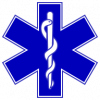Flying the PMDG 737 in VATSIM, and not looking like a complete idiot
This is mainly an overview of how to fly a flight on VATSIM with the PMDG 737, and not appear to everyone like this is your first time, although it may be. This can be used to operate the systems onboard a boeing aircraft, specifically the PMDG 737 and 744, the LDS 767, and the iFly 744. This is applicable to pretty much all flights in VATSIM, with minor changes to operations as there are differences between airlines and ATC centers.
I'll post 2 posts. One deals with addons, AIRACs, SID-STAR databases, and filing the flightplan. The next will have to do with operating the flight itself, from preflight to termination. Lets get started..
Part 1a: files required
This part deals with what you need for your flight..the first and obvious is BUY the 737. I'm dealing with the panel on the 737-800/900 since it's the most updated and usable version. Next, you need to apply all the patches at PMDG's site, to insure your 737 is the most up to date.
Next, go to www.navigraph.com to get current AIRACs. These are payware (about $2USD/month), BUT they also have a demo AIRAC: 0609. This will slowly become more out of date but I think 0609 will do for now. Starting next year, they'll start including terminal procedures with these AIRACs (AKA sids and stars), but right now you can get them at AVSIM.
OK, that's all you need, now lets go to filing your flightplan on VATSIM..
Part 1b: filing your plan on VATSIM
Just to let you know, a flightplan is there for ATC reference only. Posting stuff that you think people might be interested in, but really offers no info to your flight, don't post it. Our goal is to make you look professional, and posting what addons you're using, ETC doesn't make you look professional. The flightplan should be cold and straight to the point, no role playing crap. No BS, that's the easy way to put it.
For my flights, I try to fly a realistically as possible. This includes real world schedules and flightplans. People ask what the point of schedules are, when they just hold you back. In reality, schedules give you a goal. They give you a reason to set a higher cost index over a lower one if you're running late, or vice versa. IMHO, it's boring to aimlessly fly. So, lets say we're flying a Southwest flight from Seattle to Las Vegas. Lets go find a schedule.
http://www.southwest...requestSchedule
SWA2141
Departs: Seattle Tacoma, KSEA
Time: 1110 PST
Arrives: Las Vegas McCarren, KLAS
Time: 1335 PST
ETE: 0225
Equipment: Boeing 737-7H4
Ok, for the flight our callsign will be the airline's ICAO (SWA) and the flight number (2141). SWA2141
Now for the remarks. The flight remarks in VATSIM are what seperate newbies from the professionals. Compare what remarks I'll include to "PMDG 737 AND AS6 ONBOARD" and you'll see what I mean. The ATC gets nothing out of remarks like that.
For this flight, we're flying my currently favorite plane: N230WN (5000th 737 delivered). So, lets look at http://www.airframes.org to look up info for this aircraft
Reg Manuf. Model Type c/n l/n i/t Selcal ICAO24 Reg / Opr built
N230WN Boeing 737-7H4/W B737 34592 1868 L2J A20A81 SWA - Southwest Airlines 2006
The important info is the Type, the SELCAL, and the ICAO24.
The order for remarks isn't completely important, but putting the remarks in the right order does make you look more professional.
EET/ REG/ SEL/ OPR/ TYP/ PER/ NAV/ CODE/ RMK/
Before figuring out the EETs, lets get a route. We can find one at http://flightaware.c...tics/ifr-route/
Dep ICAO: KSEA, Arr ICAO: KLAS. Scroll down to SWA2141 and copy down the plan..or not because I've already done it for you.
SUMMA6 SUMMA HARTT RYANN BTY SUNST2
Ok, you can see SUMMA6 is the SID, SUMMA is the transition, then you follow that route to the SUNST2 arrival.
Now, lets figure out EETs. An EET, by definition, is the estimated elapsed time to a significant waypoint within a facility, or ARTCC. In order to figure this out, lets put the route into http://www.fsroute.com
The ARTCCs we cross through are KZSE, KZOA, and KZLA. KSEA is in KZSE, so we have no enroute time to that facility. So KZOA will be our first EET. The overall distance to HARTT, the first waypoint in KZOA, is 409nm. At a cruise speed of around 470kts, that's 0.870...and a whole bunch of numbers we don't need. It's 0.87 of an hour, so multiply that by 60 and get 52 minutes. So, your first EET is KZOA0052. You can figure out KZLA yourself if you want, I'll just give it you in the remarks when we're finished.
Now, for the rest of the remarks..
REG/ - the registration of the aircraft. In our case, it's N230WN.
SEL/ - the SELCAL of the aircraft. SWA's aircraft don't carry SELCAL because they don't fly transoceanic flights, so for this we can leave it blank.
OPR/ - this is the operator of the flight. In our case, it's Southwest.
TYP/ - this is the aircraft type. You specify this in the flightplan with its own box, but in some cases it's easier for the ATC to look at the remarks section and find the aircraft type there, so I always put this in.
PER/ - this is the performance category of the aircraft. A 737 is in category C (767 and up is D, dash-8 is B, and a single engine cessna is A)
NAV/ - the rating for navigation performance. The 737 is RNP10 with two IRS systems, but with the addition of a GPS, it reads RNP10 GPSRNAV. A 767, which has 3 IRS systems but no GPS would be RNP10 with no GPSRNAV. The 747-400 is RNP4 with GPSRNAV.
CODE/ - this is the ADS-B code, in the ICAO24 column. ADS-B is a system where the aircraft sends out a radio signal containing its identity and position. VATSIM more represents an ADS-B system over a radar system because the aircraft are sending out signals over the internet about themselves, if you want to think of it that way. ADS-B is good in case radar fails, and in some cases is used where no radar is provided.
RMK/ - this is where you can specify information pertaining to your flight and aircraft. We'll have two RMK/ fields for our remarks.
Now, to put this all together.
EET/KZOA0052 KZLA0037 REG/N230WN OPR/SOUTHWEST TYP/B737 PER/C NAV/RNP10 GPSRNAV CODE/A20A81 RMK/ADSB RMK/TCAS EQUIPPED
Make sure you know how to do ATC though, because remarks like this is basically saying "I know what I'm doing, so give me the best you've got."
Now for the rest of the flightplan. I would reccomend prefiling on VATSIM's website because it allows you to file your plan on the VATSIM server up to two hours before you even open FS. This makes it a lot easier to do preflight when you need to worry about other stuff.
Here's where you prefile: http://www.vatsim.net/fp/
This is what it should look like, I explain below.

1. TYPE: this is pretty self explanitory. IFR or VFR? I'd highly reccomend flying all your airline flights in VFR, since we're aiming for realism
2. CALLSIGN: we went over this, ICAO and flight number... SWA2141
3. AIRCRAFT TYPE/SPECIAL EQUIPMENT: This is probably one of the harder to learn. Simply put, find what best fits your plane here: http://www.gofir.com...ment_suffix.htm
If you're wondering what RVSM is, if the aircraft can fly at FL290-FL410, it can fly there (with a few exceptions, concorde can't fly in those altitudes because it can't maintain an altitude well enough) If I get enough requests, I'll go into more detail.
4. TRUE AIRSPEED (KTS): Again, pretty self explanatory. Just give a good cruise speed in true knots, for most commercial jets it's 450-480.
5. DEPARTURE POINT: guess, lol...your departure airport
6. DEPARTURE TIME: your departure time in zulu (GMT). PST is 8 hours behind zulu, so just add 8 hours to our departure time of 1110.
7. CRUISING ALTITUDE: the altitude you want to cruise at. 41000 is a good altitude for this flight in the 737-700, but you can do whatever feels comfy.
8. ROUTE OF FLIGHT: same thing we got off flightaware
9. DESTINATION: hmm...destination maybe?
10. EST TIME ENROUTE: most people abbreviate this at ETE. This is your approximate time in flight, normally a few minutes less than gate to gate.
11a. VOICE CAPABILITIES: you can only be truely professional if you're using voice, but choose whichever.
11. REMARKS: we went over this
12. FUEL ON BOARD: pretty self explanatory. You need fuel to get you to your destination, fuel to get you to your alternate, and an extra 40 minutes holding fuel.
13. ALTERNATE AIRPORT: it says this is optional but ALWAYS FILE IT! you need an alternate since there's a chance you need to divert.
14. PILOT'S NAME & AIRCRAFT HOME BASE: here you can put in your name, and the ICAO of either your home airport or if you know it, the main headquarters for your airline.
15. VATSIM ID: yeah...you shouldn't be flying on VATSIM if you can't figure this one out
16. PASSWORD: same explanation as 15
Well, there ya have it. You're ready for to open FS. I'll have the rest to you tomorrow or sometime this week..
Edited by Flying_Pie1104, 18 December 2006 - 10:09 PM.



















